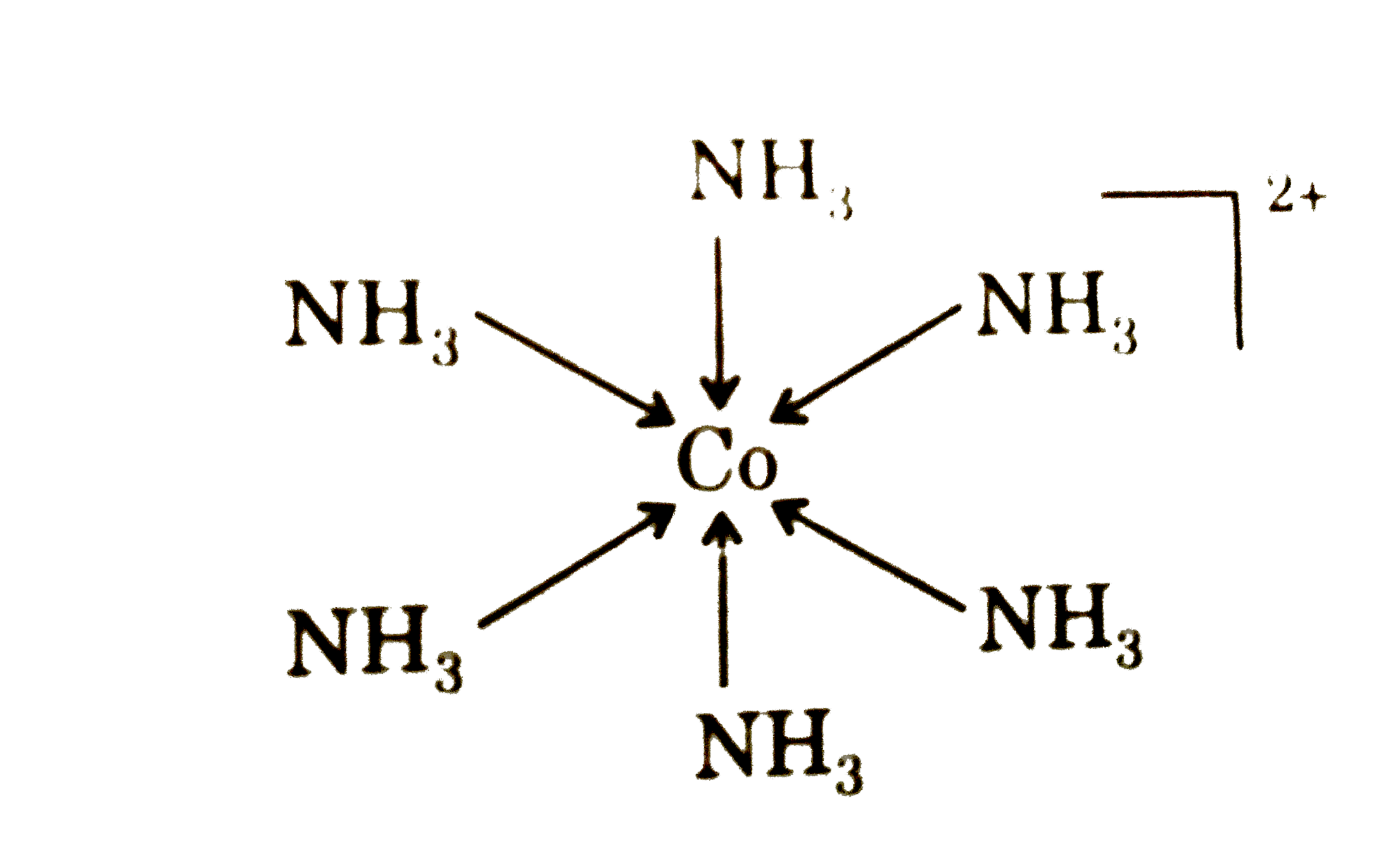Crystal field theory was proposed by H.beths (1929) and Van Vleck (1932) and as originally applied to ionic crystals to explain their optical properties and is, therefore, called crystal field theory, however, this theory was applied to the study of coordination compounds in 1950 and this theory accounts for more satisfactory expalnation for the properties of complexes especially colour and magnetism.
What is the geometry of [Co(NH3)6]2+?
Octahedral
Tetrahedral
Square planar
Square pyramidal
The correct Answer is:A
[Co(NH3)6]2+

Topper's Solved these Questions
- COORDINATION COMPOUNDSBOOK - OP TANDONCHAPTER - COORDINATION COMPOUNDSEXERCISE - COMPREHENSION 29
2 Videos
- COORDINATION COMPOUNDSBOOK - OP TANDONCHAPTER - COORDINATION COMPOUNDSEXERCISE - COMPREHENSION 30
5 Videos
- COORDINATION COMPOUNDSBOOK - OP TANDONCHAPTER - COORDINATION COMPOUNDSEXERCISE - COMPREHENSION 27
3 Videos
- CLASSIFICATION AND NOMENCLATURE OF ORGANIC COMPOUNDS BOOK - OP TANDONCHAPTER - CLASSIFICATION AND NOMENCLATURE OF ORGANIC COMPOUNDS EXERCISE - INTEGER
2 Videos
- ELECTROCHEMISTRYBOOK - OP TANDONCHAPTER - ELECTROCHEMISTRYEXERCISE - Matrix-Matching Type Question
3 Videos
Similar Questions
Knowledge Check
Crystal field theory was proposed by H.beths (1929) and Van Vleck (1932) and as originally applied to ionic crystals to explain their optical properties and is, therefore, called crystal field theory, however, this theory was applied to the study of coordination compounds in 1950 and this theory accounts for more satisfactory expalnation for the properties of complexes especially colour and magnetism.
What is the hybridisation of [Ni(H2O)6]2+?Asp3d2Bd2sp3Csp3dDdsp3Crystal field theory was proposed by H.beths (1929) and Van Vleck (1932) and as originally applied to ionic crystals to explain their optical properties and is, therefore, called crystal field theory, however, this theory was applied to the study of coordination compounds in 1950 and this theory accounts for more satisfactory expalnation for the properties of complexes especially colour and magnetism.
What is the hybridisation of [Ni(H2O)6]2+?Asp3d2Bd2sp3Csp3dDdsp3Crystal field theory was proposed by H.beths (1929) and Van Vleck (1932) and as originally applied to ionic crystals to explain their optical properties and is, therefore, called crystal field theory, however, this theory was applied to the study of coordination compounds in 1950 and this theory accounts for more satisfactory expalnation for the properties of complexes especially colour and magnetism.
Which of the following complex is paramagnetic in nature ?AK4[Fe(CN)6]BK3[Fe(CN)6]CPt[(NH3)4]2+DNone of these
On the basis of valence bond theory, explain geometry, nature of hybridisation, magnetic property and optical isomerism of [Co(ox)3]3−and[CoF6]3−.
View SolutionCrystal field theory was proposed by H.beths (1929) and Van Vleck (1932) and as originally applied to ionic crystals to explain their optical properties and is, therefore, called crystal field theory, however, this theory was applied to the study of coordination compounds in 1950 and this theory accounts for more satisfactory expalnation for the properties of complexes especially colour and magnetism.
Which of the following complex is paramagnetic in nature ?
View SolutionThe colour of the coordination compounds depends on the crystal field splitting . What will be the correct order of obsorption of wavelength of light in the visible region, for the comolexes, [Co(NH3)6]3+m and [Co(H2O)3+6?
View SolutionIn the complex ion MLn+6,Mn+ has four d-electrons and L is a strong field ligand. According to crystal field theory, the magnetic properties of the complex ion correspond to how many unpaired electrons ?
View SolutionIn the complex ion MLn+6,Mn+ has four d-electrons and L is a Weak field ligand. According to crystal field theory, the magnetic properties of the complex ion correspond to how many unpaired electrons ?
View Solution
